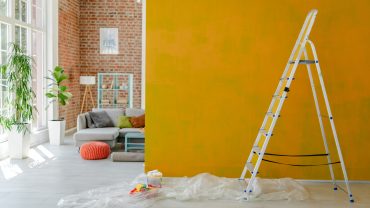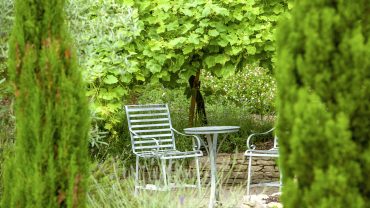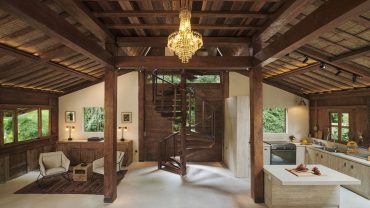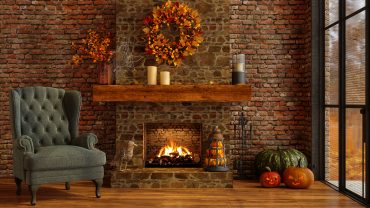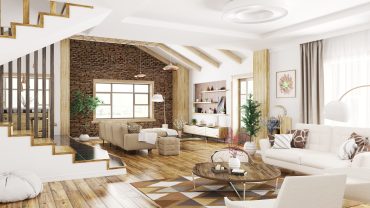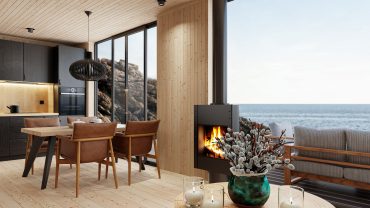Spanning roughly from the 14th to the 17th century, the Renaissance period marked a profound transformation in art, culture, and architecture. Originating in Italy, this cultural rebirth placed immense value on symmetry, proportion, and perspective, influencing the way homes were decorated.
Today, Italian Renaissance interior design is a testament to the era’s emphasis on elegance, classical beauty, and refined detail. So, what defines Renaissance interior design, and how has it influenced modern aesthetics? Let’s get enlightened about this rich and opulent style.
The Foundation of Renaissance Interior Design

The Palazzo Senatorio in Rome (Credit: Luis Diaz Devesa via Getty Images)
Around a thousand years after the fall of the Western Roman Empire, classical thinking made a comeback. Beginning in Italy in the 14th century, the Renaissance was the “rebirth” of the philosophy, literature, and scholarship of antiquity. But this revival of ancient Greece and Rome went well beyond academia. It was reflected in architecture, art, and design; in the works of da Vinci, Raphael, and Michelangelo, and buildings designed by architects like Filippo Brunelleschi.
Renaissance house interiors made a clean break from the Gothic period’s ornate and vertical emphasis, favouring instead the horizontal and symmetrical and creating spaces exuding grandeur and sophistication. The palaces or “palazzi” of Italy, particularly those of Florence are considered the epitome of Renaissance interior design, embodying the style’s airy elegance and classical beauty. So, how was this achieved? Let’s take a closer look at the characteristics of Renaissance style interiors.
Elements of Interior Design Renaissance Style

Stunning Renaissance cornices (Credit: eugenesergeev via Getty Images)
Renaissance interior design was not a copy of ancient styles, but rather was a style of its own; one that took its cues from antiquity. This can be seen in its characteristics, including:
Symmetry & Balance
Renaissance design placed a strong emphasis on symmetrical layouts and balanced proportions in rooms and buildings. This principle was applied to the arrangement of furniture, windows, doors, and architectural features.
Geometric Designs
Symmetrical geometric shapes were prominent in Renaissance house interiors, such as checkerboard floor designs.
Open Spaces & High Ceilings
Renaissance interiors favoured open, airy spaces with high ceilings. Vaulted and domed ceilings were common, creating a sense of grandeur and spaciousness.
Columns, Pilasters & Cornices
Columns, pilasters, and cornices were essential elements in Renaissance interior design, adding to the structural beauty and grandeur of the spaces. These architectural features were often inspired by classical Roman and Greek designs, contributing to the symmetry and elegance of Renaissance interiors.
Frescoes & Tapestries
Walls in Renaissance house interiors were frequently adorned with frescoes or tapestries that depicted mythological scenes, historical events, or landscapes. These decorative elements reflected the period’s fascination with storytelling and the visual arts, adding both colour and narrative depth to the interiors.
Furniture as Status Symbols
Furniture during the Renaissance was not merely functional but also a statement of wealth and taste. Pieces were often crafted from rich woods like walnut and featured intricate carvings and inlays, showcasing the era’s emphasis on craftsmanship and detail.
Rich Colour Palette
Renaissance interiors embraced a rich palette of colours, with deep reds, blues, and greens being commonly used. These hues were often complemented by gold accents, creating a sense of warmth and opulence that mirrored the artistic achievements of the period.
Renaissance Style Decor

A stunning example of a Renaissance ceiling (Credit: Nikada via Getty Images)
Decorative elements in Renaissance interior design were heavily influenced by classical themes. Common motifs included laurel wreaths, acanthus leaves, and mythological creatures, all of which were integrated into furniture, textiles, and architectural details. These motifs not only added to the aesthetic appeal but also conveyed a sense of learned sophistication.
Ceilings in Renaissance homes were often elaborately decorated. Coffered ceilings with painted panels or wooden beams were typical, adding depth and interest to the room. These features highlighted the Renaissance’s appreciation for artistry and craftsmanship.
The Timeless Appeal of Renaissance Interiors

Renaissance-style grandeur (Credit: Vostok via Getty Images)
The allure of Renaissance interior design lies in its timeless elegance and attention to detail. This style has a universal appeal, offering a sense of grandeur and sophistication. Whether in a historical palazzo or a modern home, Renaissance style decor brings a touch of classical beauty and refined taste to any space.
The use of natural materials such as stone, wood, and metal in Renaissance interiors adds to their lasting charm. These materials not only provide a connection to nature but also ensure durability and a sense of authenticity.
Modern Renaissance Interior Design

Modern interpretation of Renaissance interior design (Credit: Vostok via Getty Images)
In contemporary settings, Renaissance interior design has been adapted to suit modern tastes and lifestyles. This modern Renaissance interior design blends historical elements with contemporary conveniences, creating a harmonious balance between old and new.
One approach to achieving this look is by incorporating key Renaissance features such as high ceilings, large windows, and classical columns into modern spaces. Furniture can be a mix of antique pieces and modern designs, ensuring the space feels both timeless and relevant.
Modern Renaissance interiors often use a neutral base palette, adding pops of rich colours through accessories such as cushions, rugs, and artwork. This allows for a sophisticated look that nods to the past while remaining fresh and current.
Renaissance Interior Design in Today's Homes

Renaissance style bedroom (Credit: Enes Evren via Getty Images)
Today, many homeowners and designers are drawn to the Renaissance style for its ability to create spaces that are both beautiful and functional. The principles of balance, symmetry, and proportion that define Renaissance interior design are still relevant and can be adapted to suit contemporary needs.
Modern Renaissance interior design can be as simple as adding a few key pieces of furniture, choosing rich fabrics for upholstery, or using classical motifs in wall art and decor. The goal is to create a space that feels luxurious and well-considered, reflecting the Renaissance’s dedication to beauty and artistry.
Past and Present: Renaissance Interior Design

Doge's Palace, St Mark's Square, Venice (Credit: Jaroslav Frank via Getty Images)
Renaissance interior design, with its roots in classical antiquity and its emphasis on symmetry, proportion, and rich detailing, continues to inspire and captivate today. Whether through traditional Renaissance house interiors or modern interpretations, this style offers a unique blend of historical grandeur and contemporary elegance.




